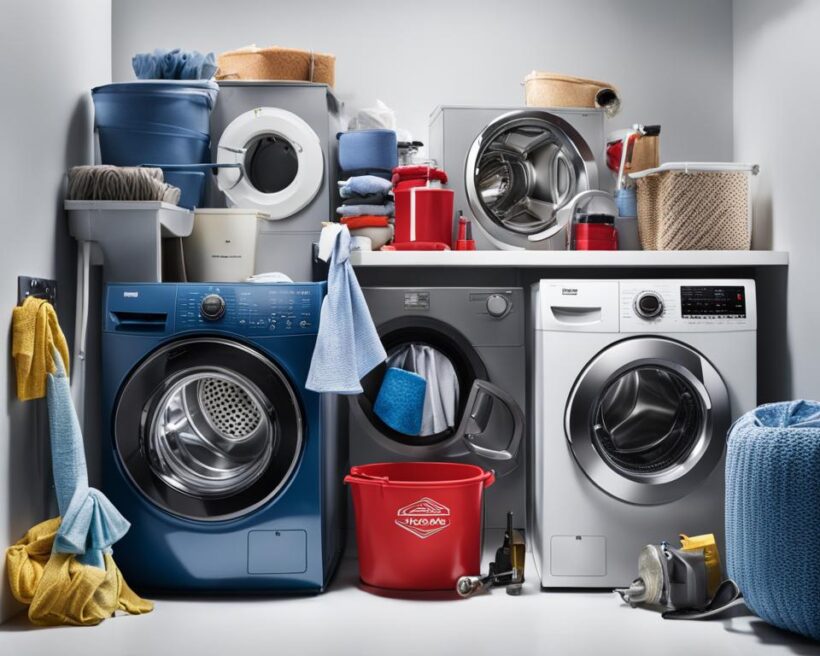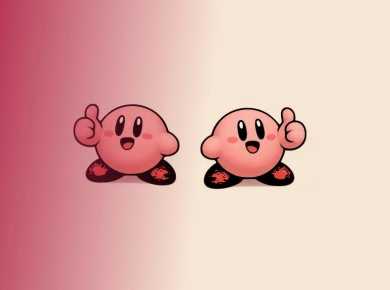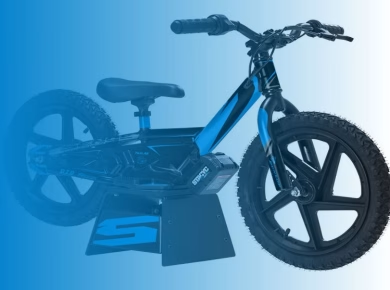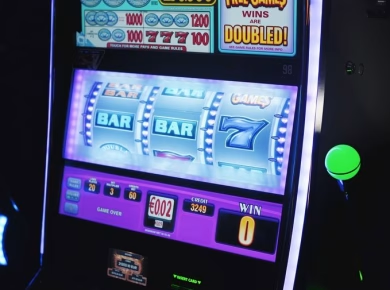When it comes to buying washing machine parts, it’s essential to make informed decisions. As a savvy shopper, you want to ensure that you choose the right parts for your appliance. In this guide, I will provide you with valuable tips on buying washing machine parts, so you can keep your machine running smoothly for years to come.
Before diving into the world of washing machine parts, it’s crucial to familiarize yourself with our comprehensive washing machine buying guide. This guide will equip you with the knowledge you need to make informed decisions and choose the best parts for your specific machine.
Another valuable resource you can leverage is ratings and reviews of different models. By referring to laundry lab tests and customer feedback, you can gain insights into how different parts perform and their overall quality.
Maintaining your washing machine is equally important to ensure its longevity. By following proper maintenance advice, you can prevent common issues and extend the lifespan of your appliance.
Don’t overlook slightly older models when shopping for parts. Many older models have similar features and meet federal efficiency standards, making them budget-friendly alternatives. Consider this option to save some money without compromising on quality.
Understanding the Different Parts of a Washing Machine
When it comes to understanding the functionality of a washing machine, it’s important to familiarize yourself with the different parts that make it work seamlessly. Each component plays a crucial role in the overall operation of the appliance. Here are the main parts you should know:
Water pump
The water pump is responsible for circulating water in and out of the machine during the wash and rinse cycles. It ensures efficient drainage and proper water flow throughout the cleaning process.
Drain pipe
The drain pipe is connected to the water pump and is responsible for carrying out the used water from the machine into the plumbing system or drainage area.
Water inlet valve
The water inlet valve controls the flow of water into the washing machine during the fill cycle. It opens to allow water to enter the tub and closes to stop the flow once the desired level is reached.
Tub/Drum
The tub or drum is where you place your clothes for washing. It rotates and agitates the clothes while they are submerged in water, ensuring thorough cleaning.
Agitator/Paddles
The agitator or paddles are found in top-load washing machines and work to move the clothes around the tub, creating a scrubbing action to remove dirt and stains.
Motor
The motor is the powerhouse of the washing machine. It drives the rotation of the drum or agitator, allowing for the movement of clothes and the overall functioning of the appliance.
Circuit board
The circuit board acts as the brain of the washing machine, controlling various functions and settings. It receives signals from different components and ensures smooth operation through electronic control.
Timer
The timer regulates the duration of each cycle, allowing you to set the desired wash time. It works in conjunction with other components to ensure efficient and accurate timing.
Control panel
The control panel provides the user interface for operating the washing machine. It includes buttons, dials, and displays that allow you to select different cycles, adjust settings, and monitor the progress of your laundry.
Heating element
The heating element, found in some washing machines, is responsible for heating the water to the desired temperature. It ensures effective stain removal and sanitization of clothes.
Having a basic understanding of the different parts of a washing machine can help you troubleshoot issues, maintain your appliance, and make informed decisions when it comes to buying replacement parts. Now that you know the key components, you can confidently tackle any washing machine-related challenges that may arise.
Signs of Broken Washing Machine Parts
When it comes to maintaining your washing machine, it’s essential to be aware of signs that indicate a broken part. By recognizing these signs early on, you can address the issue promptly and avoid further damage to your appliance.
1. Loud Banging Noises
If you hear loud banging noises during the spin cycle, it could indicate a problem with the drum or tub. This could be due to a broken shock absorber, worn-out drum bearings, or loose components. Ignoring these noises may lead to further damage and even premature failure of the washing machine.
2. Improper Water Draining
Difficulty draining water from your washing machine is another sign of a potential problem. If you notice water pooling at the bottom of the machine or slow drainage, it could indicate a clogged drain pipe or a malfunctioning water pump. It’s important to address this issue promptly to prevent water damage and ensure proper functionality.
3. Water Leaks
Water leakage is a clear indication of a broken part in your washing machine. Check for puddles or dampness around the appliance and inspect the water inlet valve, hoses, and connections. Leaks can be caused by damaged seals, cracked hoses, or faulty valves. Prompt repair is crucial to prevent water damage to your home and potential mold growth.
4. Error Codes and Issues
If your washing machine displays error codes or malfunctions during a wash cycle, it could indicate a problem with one or more parts. These error codes vary depending on the make and model of your machine, but they often provide valuable insights into the specific issue. Consult the owner’s manual for troubleshooting tips or consider contacting a professional for assistance.
5. Issues with Spinning or Door Locking
Problems with the spinning function or door locking mechanism of your washing machine can be signs of broken parts. If your clothes come out wet or the drum fails to spin, it could indicate a faulty motor or a damaged belt. Similarly, if the door doesn’t lock properly, it may be due to a malfunctioning latch or sensor. These issues require prompt attention to ensure proper washing and to avoid potential safety hazards.
By keeping an eye out for these signs of broken washing machine parts, you can take appropriate action to address the problem. Whether it’s consulting the owner’s manual for troubleshooting tips or seeking professional assistance, timely repairs can extend the lifespan of your washing machine and help maintain its optimal performance.
| Signs | Possible Causes |
|---|---|
| Loud Banging Noises | Broken shock absorber, worn-out drum bearings, loose components |
| Improper Water Draining | Clogged drain pipe, malfunctioning water pump |
| Water Leaks | Damage seals, cracked hoses, faulty valves |
| Error Codes and Issues | Various part malfunctions |
| Issues with Spinning or Door Locking | Faulty motor, damaged belt, malfunctioning latch or sensor |
Installation and Considerations When Buying Washing Machine Parts
When it comes to buying washing machine parts, there are several important installation and considerations to keep in mind. The right parts can ensure that your washing machine performs optimally and lasts for a long time. Here are some key factors to consider:
1. Capacity and Size
Before purchasing washing machine parts, determine the capacity and size that best suits your needs. Consider the amount of laundry you typically do and the available space in your laundry area. Smaller households may benefit from compact models, while larger families may require larger capacities to accommodate their laundry needs.
2. Hookups and Compatibility
Ensure that the parts you purchase are compatible with your specific washing machine model. Check the specifications of your machine and match them with the parts’ specifications to ensure a proper fit. Additionally, consider the required hookups for installation, such as electrical outlets, water supply, and drainage. Make sure you have the necessary connections in place or are willing to make any required modifications.
3. Energy Efficiency
Energy efficiency is an important consideration when choosing washing machine parts. Look for parts that meet or exceed energy efficiency standards, as they can help you save on electricity bills in the long run. EnergyStar-rated parts are designed to consume less energy while delivering excellent performance.
4. Water Level Options and Additional Features
Depending on your washing needs and preferences, consider the water level options and additional features available with the parts you’re considering. Some machines offer multiple water level settings, allowing you to customize the washing process based on the size of the load. Additionally, look for features like steam, delay wash, extra rinse, or specialized cycles for specific fabric types. These features can enhance the functionality and convenience of your machine.
| Consideration | Key Points |
|---|---|
| Capacity and Size | Determine the right capacity and size based on your laundry needs and available space. |
| Hookups and Compatibility | Ensure the parts you choose are compatible with your machine and have the necessary hookups for installation. |
| Energy Efficiency | Opt for energy-efficient parts to save on electricity costs in the long run. |
| Water Level Options and Additional Features | Consider the available water level options and additional features that meet your specific requirements. |

By considering these factors and making informed decisions when buying washing machine parts, you can ensure smooth installation and optimal performance of your appliance. Take the time to research and compare options to find the parts that best suit your needs and preferences.
Different Types of Washing Machines and Their Features
When it comes to buying a washing machine, you have several options to choose from. Each type of washing machine has its own unique features and benefits, so it’s important to understand the differences before making a decision. Let’s explore the different types of washing machines and their key features.
Top-Load Washers
A top-load washer is a traditional style of washing machine where you load your laundry from the top. These washers are known for their affordability and ease of use. They typically have a shorter wash cycle compared to front-load washers and are great for those who prefer a more straightforward washing experience.
Some notable features of top-load washers include:
- Agitator or impeller for efficient cleaning
- Large capacity for bulky items
- Ease of loading and unloading
- Wide range of price options
Front-Load Washers
Front-load washers have gained popularity in recent years due to their energy efficiency and superior cleaning performance. With a front-load washer, you load your laundry from the front through a door that opens horizontally. These washers use less water and detergent, making them more environmentally friendly.
Some notable features of front-load washers include:
- High spin speeds for faster drying times
- Gentle on clothes, reducing wear and tear
- Stackable design for space-saving installations
- Advanced wash cycles and options
Stacked Washer-Dryer Units
Stacked washer-dryer units are an excellent choice for those with limited space. As the name suggests, these units consist of a washing machine stacked on top of a dryer. This configuration allows you to have both a washer and a dryer without sacrificing valuable floor space.
Key features of stacked washer-dryer units include:
- Compact design for small homes or apartments
- Saves time by drying clothes without needing a separate machine
- Versatile installation options: can be stacked or placed side by side
- Great for tight laundry closets or spaces
All-in-One Washer-Dryer Combos
If you’re looking for the ultimate space-saving solution, an all-in-one washer-dryer combo is worth considering. These machines combine both washing and drying functions into a single unit, eliminating the need for a separate dryer. All-in-one washer-dryer combos are popular in apartments or small homes where space is limited.
Some features of all-in-one washer-dryer combos include:
- Convenient all-in-one design
- Eliminates the need for a separate dryer
- Compact size for small spaces
- Automatic transfer from wash to dry cycle
No matter which type of washing machine you choose, it’s important to consider your specific needs and preferences. Whether you prioritize affordability, energy efficiency, or space-saving capabilities, there is a washing machine out there that will suit your lifestyle.
Conclusion
When buying washing machine parts, taking the time to research and consider your options is crucial. Understanding the different parts of a washing machine is essential to make informed decisions. It is important to be aware of signs of broken parts and to carefully evaluate the installation requirements and considerations.
Choosing a washer type that fits your needs and preferences is another important factor to consider. Take into account factors like capacity, size, hookups, energy efficiency, and additional features. By making an informed decision, you can ensure that you buy the right washing machine parts for your appliance.
By following these steps, you will not only enjoy an extended lifespan for your washing machine but also enhanced performance. So, take the time to do your research and consider all the relevant factors before making a purchase. In doing so, you can have peace of mind knowing that you have made the best choice for your washing machine.
FAQ
What should I consider when buying washing machine parts?
When buying washing machine parts, it’s important to consider your options and make an informed decision. Start by checking out our washing machine buying guide for more information. You can also find ratings of different models to see how they perform in laundry lab tests. Additionally, make sure to follow washing machine maintenance advice to ensure the longevity of your appliance. Keep in mind that older models may have similar features and meet federal standards for efficiency, so don’t hesitate to look for slightly older models that may be more budget-friendly.
What are the main parts of a washing machine?
A washing machine is made up of various components, each with its own function. Here are the main parts you should know: water pump, drain pipe, water inlet valve, tub/drum, agitator/paddles, motor, circuit board, timer, control panel, and heating element.
How can I tell if a part in my washing machine is broken?
It’s important to keep an eye out for signs that a part in your washing machine may be broken and in need of repair. Some common signs include loud banging noises, improper water draining, water leaks, error codes displayed on the machine, and issues with spinning or door locking. If you notice any of these signs, consult your owner’s manual for troubleshooting tips or consider calling a professional for assistance.
What considerations should I keep in mind when installing washing machine parts?
Before buying washing machine parts, there are several installation and considerations to keep in mind. First, determine the type of washer you want, whether it’s a traditional top-load washer, a front-load washer, or a stacked washer-dryer combo. Consider the space you have available and the size of the washer you need. Ensure that you have the necessary utilities and hookups, including electrical outlets, water supply, and drainage. Energy efficiency is also important, so look for EnergyStar-rated washers and compare energy usage figures. Additionally, consider the water level options, temperature settings, and other features like steam, delay wash, and extra rinse according to your needs and preferences.
What are the different types of washing machines available?
There are different types of washing machines available in the market, each with its own features and benefits. Traditional top-load washers are affordable and easy to load, while front-load washers are more energy-efficient and offer better performance. Stacked washer-dryer units are great for saving space, especially in small homes, while all-in-one washer-dryer combos are convenient for compact spaces. Consider the pros and cons of each type and choose the one that best suits your needs and preferences.







